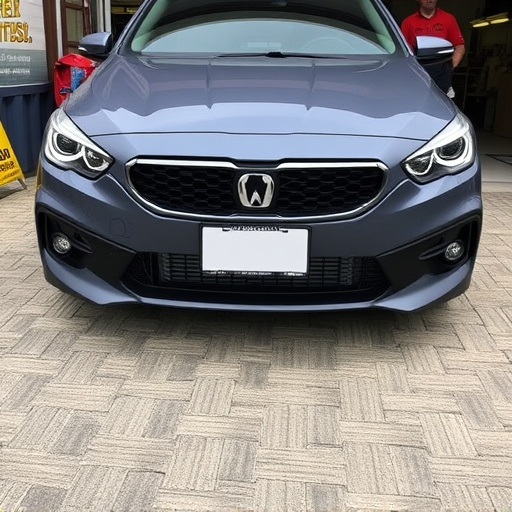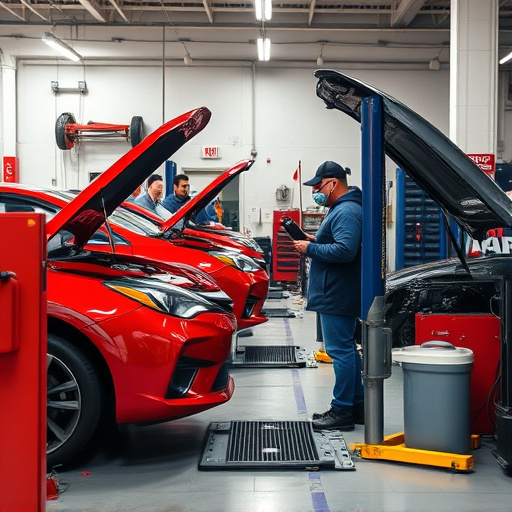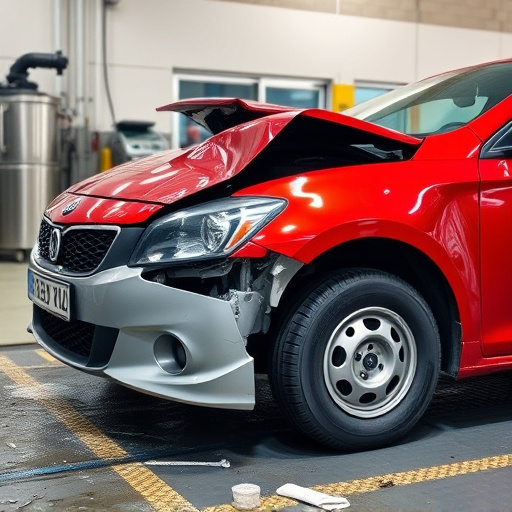Effective management of customer repair expectations in auto restoration and collision repair is crucial through clear communication, active listening, and regular updates using various channels. Training staff to interpret preconceived notions, provide accurate damage assessments, and offer transparent timelines builds trust and enhances client satisfaction, turning potential stress into loyalty.
In today’s competitive market, smoothly managing customer repair expectations is vital for retaining satisfaction and fostering loyalty. This article guides you through training staff to excel in this crucial aspect of customer service. We’ll explore key strategies, beginning with understanding the nuances of customer repair expectations and transitioning into effective communication techniques. Additionally, we’ll delve into efficient repair implementation strategies, ensuring your team meets and exceeds customer needs every step of the way.
- Understanding Customer Repair Expectations
- Training Staff for Effective Communication
- Implementing Strategies for Efficient Repairs
Understanding Customer Repair Expectations

In the realm of customer service, especially within industries like classic car restoration and vehicle collision repair, understanding customer repair expectations is paramount. Customers often approach these services with specific ideas about timelines, costs, and outcomes, shaped by their past experiences or what they’ve seen in movies (like a flawless, swift car paint job). Staff members must be adept at deciphering these unspoken assumptions and communicating transparently to manage these expectations smoothly.
Whether it’s a customer seeking meticulous car paint services or repairs for a beloved vehicle involved in a collision, their ideal outcome can vary greatly. Some may prioritize speed, others quality, and still others affordability. Trained staff should be equipped to ask probing questions, clarify needs, and set realistic expectations from the initial interaction, fostering trust and ensuring everyone is on the same page throughout the repair process.
Training Staff for Effective Communication

Effective communication is a cornerstone of managing customer repair expectations. Training staff to articulate information clearly and empathetically ensures customers understand the process, timeline, and potential costs associated with their vehicle’s repairs. This proactive approach fosters trust and minimizes frustration. By teaching them to actively listen to customer concerns, ask clarifying questions, and provide regular updates tailored to each client’s preferences, staff can enhance satisfaction levels significantly.
Moreover, training should cover various communication channels, including in-person interactions, phone calls, and digital platforms. In today’s digital era, many customers prefer online updates via email or text messages. Training auto repair staff to leverage these tools efficiently ensures they stay connected with clients throughout the repair process. Whether it’s providing initial estimates, scheduling updates, or confirming completion, efficient communication channels contribute to a seamless experience for customers seeking services at their local car repair shop or frame straightening facility.
Implementing Strategies for Efficient Repairs

In an automotive body shop, managing customer repair expectations begins with efficient strategies for handling repairs. The first step is to assess the damage accurately and provide a clear timeline for the restoration process. This transparency builds trust with clients, ensuring they understand the extent of work required. For instance, when dealing with a car dent repair, staff should be equipped to explain the various techniques available and the expected turnaround time, setting realistic customer repair expectations.
Staff training should emphasize the importance of effective communication throughout. Keeping customers informed about progress, even minor updates, enhances their experience. This proactive approach can turn a potentially stressful situation into a positive one, especially in cases of complex car bodywork repairs. By implementing these strategies, an automotive body shop can smoothly manage customer repair expectations, fostering client satisfaction and loyalty.
Training staff to manage customer repair expectations smoothly is a multifaceted process that combines understanding customer needs, effective communication strategies, and efficient repair implementation. By equipping your team with the right tools and knowledge, you can significantly enhance customer satisfaction and build long-term loyalty. Remember, meeting and exceeding customer repair expectations is key to fostering positive relationships and ensuring business success.














